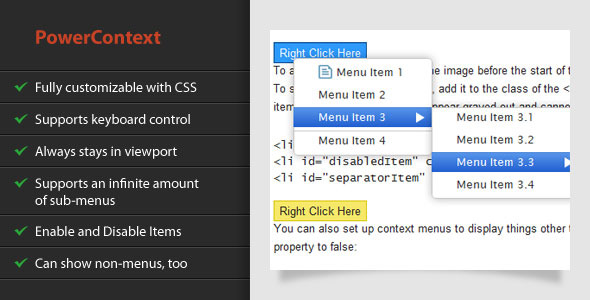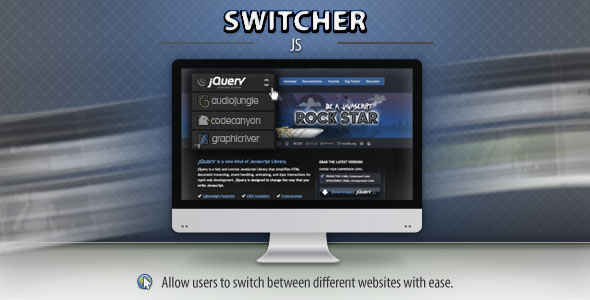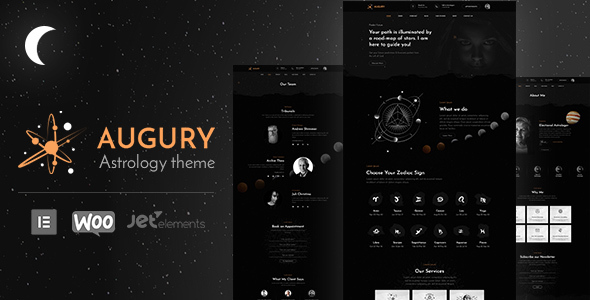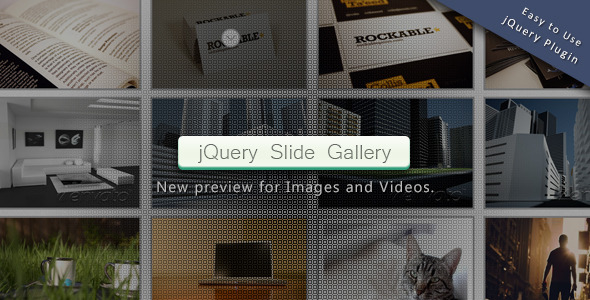
PowerContext is a lightweight JavaScript library that enables developers to implement fully customizable context menus in web applications with minimal effort. By simulating native application behavior through right-click menus, it significantly enhances user experience and interaction capabilities.
Core Functionality and Benefits
This powerful solution transforms standard HTML elements into interactive components with context-sensitive actions. Unlike basic browser context menus, PowerContext gives developers complete control over menu content, behavior, and appearance while maintaining intuitive operation patterns users expect.
Key Advantages for Web Applications
- Native-like experience – Creates application behaviors that match desktop software expectations
- Contextual actions – Shows relevant options based on where users click or what they select
- Space efficiency – Keeps secondary actions hidden until needed, reducing interface clutter
- Accessibility options – Supports both mouse and keyboard navigation for inclusive design
Advanced Styling and Customization
PowerContext offers three professionally designed menu styles out of the box, but provides complete CSS control for custom implementations. The library handles all positioning logic automatically while giving designers freedom over visual presentation.
Customization Features
- Theme system – Switch between light, dark, and compact styles with simple configuration
- CSS hooks – Override any visual aspect through well-documented class names
- Dynamic sizing – Menus automatically adjust width and height based on content
- Responsive behavior – Ensures menus always remain visible within the viewport
Implementation Options
Developers can create menus using either HTML markup or JavaScript objects, providing flexibility for different development workflows and application architectures.
HTML-Based Implementation
<div class="context-menu">
<ul>
<li data-action="copy">Copy</li>
<li data-action="paste">Paste</li>
<li class="separator"></li>
<li data-action="preferences">Preferences</li>
</ul>
</div>JavaScript Object Implementation
const menuConfig = {
items: [
{ label: "Copy", action: "copy" },
{ label: "Paste", action: "paste" },
{ type: "separator" },
{ label: "Preferences", action: "preferences" }
]
};Advanced Features and Techniques
Dynamic Menu Management
PowerContext supports real-time menu modifications, allowing applications to adapt menus based on application state or user permissions:
- Enable/disable individual items or entire menus programmatically
- Add or remove menu items without requiring page reload
- Insert custom HTML elements like forms or informational content
- Implement hierarchical menus with unlimited nesting levels
Event Handling and Callbacks
The library provides comprehensive event hooks for advanced interaction scenarios:
- onShow – Trigger actions before menu display (permissions checks, dynamic loading)
- onHide – Cleanup operations after menu closure
- onSelect – Handle menu item selection with context data
- onLoad – Initialize menu content asynchronously
Browser Compatibility and Requirements
PowerContext maintains broad compatibility while requiring minimal dependencies:
Technical Requirements
- jQuery 1.7+ – Core dependency for DOM manipulation and event handling
- HoverIntent (recommended) – Improves submenu behavior for better usability
- Modern browsers – Works in Chrome, Firefox, Safari, Edge, and IE11+
Known Limitations
Due to browser security restrictions, Opera prevents JavaScript from intercepting right-click events, making the context menu functionality unavailable in that browser. For Opera users, consider providing alternative access to menu functions through standard UI elements.
Performance Considerations
PowerContext is optimized for efficiency, but these practices ensure optimal performance:
- Reuse menu configurations for multiple elements when possible
- Debounce rapid context menu triggers in high-interaction areas
- Load menu content dynamically for complex applications
- Use CSS transforms for smoother animations
Practical Implementation Examples
Document Editor Context Menu
Implement a rich text editor with formatting options:
const editorMenu = {
items: [
{ label: "Cut", action: "cut", icon: "scissors.svg" },
{ label: "Copy", action: "copy", icon: "copy.svg" },
{ label: "Paste", action: "paste", icon: "paste.svg" },
{ type: "separator" },
{
label: "Format",
items: [
{ label: "Bold", action: "format-bold" },
{ label: "Italic", action: "format-italic" }
]
}
]
};Image Gallery Context Menu
Create an interactive media browser with sharing options:
$('.gallery-image').powerContext({
items: [
{ label: "View Full Size", action: "view-full" },
{ label: "Download", action: "download" },
{
label: "Share",
items: [
{ label: "Email", action: "share-email" },
{ label: "Social Media", action: "share-social" }
]
},
{ type: "separator" },
{ label: "Properties", action: "show-properties" }
],
onShow: function(target) {
// Load image-specific data before showing menu
const imageId = $(target).data('image-id');
this.updateItemsForImage(imageId);
}
});Troubleshooting Common Issues
Menu Positioning Problems
- Ensure parent elements don’t have overflow:hidden – This can clip menus
- Check z-index values – Menus may appear behind other elements
- Verify viewport detection – Test edge cases near window boundaries
Event Handling Challenges
- Prevent event bubbling when necessary with
event.stopPropagation() - Use delegated events for dynamically created menu items
- Ensure click handlers don’t conflict with menu triggers
By implementing PowerContext with these best practices, developers can create professional-grade context menus that significantly enhance application usability while maintaining performance and cross-browser compatibility.


